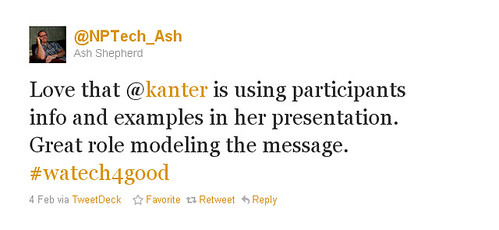[slideshare id=6814180&doc=seattle-tech-for-goodsummit-110204120400-phpapp01]
Last week, I facilitated an interactive keynote in Seattle at 2011 Tech for Good Leadership Summit sponsored by Microsoft Community Affairs, in partnership with NPower Seattle. By all accounts, the event held the space for peer learning.
It was great to see long-time colleague from NPower Seattle Peg Giffels who I met ten years ago when she first joined the staff. I was presenting a strategic technology workshop at one of their conferences. I got to meet the dynamic NPower Seattle executive director Alison Carl White who talked passionately about her organization’s mission and programs. I also got to catch up with more recent NPtech colleagues San McColloch, Erica Mills, and Peter Drury.
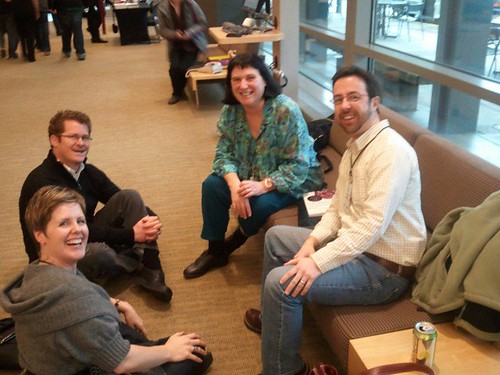
Akhtar Badshah, Senior Director of Global Community Affairs for Microsoft kicked off the day with an interactive presentation about the trends in technology. He didn’t do the “sage of the stage” thing, he gave ample opportunities for the audience digest the ideas he shared as well as engage them in conversation. Alison Carl White from NPower Seattle has a good summary on her blog.
There are people who just want an expert on the stage to share their wisdom. They don’t want to engage, reflect, or hear what others in the room are doing. I just don’t like that style because prevents deeper sharing of insights. On the other hand, people do want those tips and best practices. So, letting the knowledge out in the room is a balancing act of peer interaction with expert insights. So, how can you do that in a keynote with several hundred people in the room? It’s a design challenge.
1. Don’t Just Research Your Audience, Make Them Part of the Presentation
I used a brief pre-survey where I was able to collect information about success stories, challenges, and current social media usage. I incorporated examples from people in the room and then asked them talk about it. As the facilitator, you have design questions so they illicit stories.
The survey asked participants to share a story that illustrates how social media has brought value to their organization. I’ve asked this question before, but this is the first time I had so many stories that it was hard to narrow it down to a few. I used a “living case study” approach – doing an interview with them to share how they achieved their success. This generated some fantastic insights:
Foundation for Early Learning shared a story about how they used social media channels to spread awareness about a funding program and how it resulted in getting the information to a wider audience – a 33% increase in traffic and downloads of the information. When asked to share how they achieved their success, they told the audience about the importance of doing homework in the form of listening and setting realistic expectations for results.
Northwest Harvest Food Bank used its social media channels to mobilize supporters to give food donations that ended up breaking a Guinness Book of World Records. While you could visit their blog, Facebook page, and Twitter stream to see how they engaged and mobilized their supporters, the hidden gem came out when asked, “What was the secret to your success?” They had a partnership with a number of other hunger organizations and advocates who worked as volunteers to share the word of the drive through their networks, leveraging a networked effect.
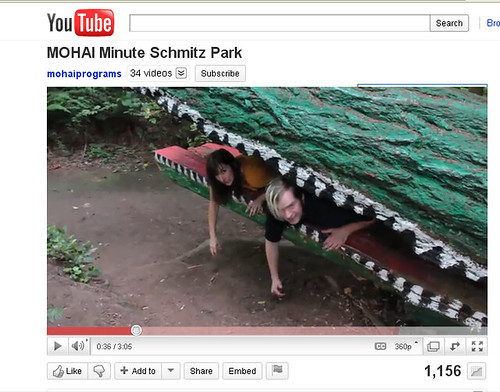
Museum of History and Industry ( MOHAI) uses social media to engage with Seattle residents whom they would not be able to connect with otherwise and have a say in how history is being interpreted. The video is part of a series of “MOHAI Minute” videos on Youtube. The woman in the mouth of the Alligator was in the room. She told the story of how she created the videos herself initially, but when they started to catch on, she documented the results. She was able to go to her boss and get some more resources in the budget for social media.
Seattle Symphony created flashmob and promoted it with Facebook, Youtube, and Twitter effectively. It directly increased ticket sales. In this living case study, the staff person from the Seattle Symphony shared how they did conversion tracking. I asked her where they got the idea for doing a flash mob. She mentioned how useful Twitter is for connecting and following peers to get ideas to evolve pilots for social media initiatives. What is remarkable – as busy as they are getting the Symphony on the stage, this staff makes time for on the job informal learning through social media.
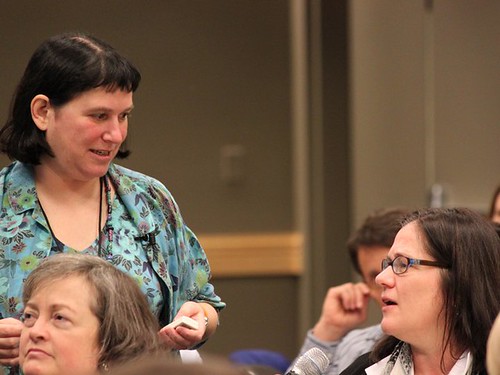
2. Use Metaphor or Inspirational Quote that Sums Up Your Key Point and Use It Throughout
Over the past year as more and more nonprofits are embracing social media, we are starting to see different levels of practice or “maturity of practice.” On Martin Luther King, Jr’s birthday this year, I came across a quote that offered a good metaphor for such a framework:
“If you can’t fly then run, if you can’t run then walk, if you can’t walk then crawl, but whatever you do you have to keep moving forward.”
I created an assessment framework that a nonprofit could use to determine the level of their current social media practice and think about getting to the next step. I explained the model and had people discuss it with their peers and then we had a full group discussion about where people were and what was needed to get to the next step. The full group discussion allowed people at different levels to share their experiences.
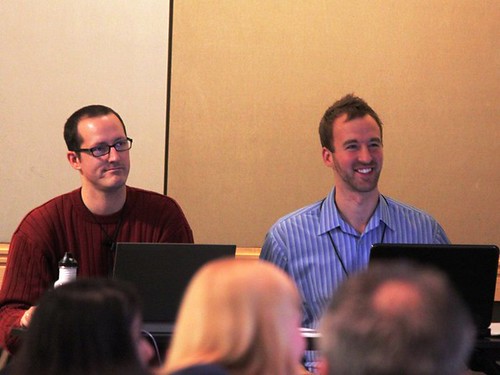
3. Use Twitter to Bring More People Into The Conversation
The conference hashtag #watech4good was used to encourage people both in the room and not in the room to Tweet – and ask questions. I appointed two Twitter advocates who live Tweeted the discussion and also verbalized questions and comments from Twitter, providing a link between online and offline.
4. Give Them A Couple of Practical Tips or Insights To Solve Their Problems
The survey asked participants to share their great social media challenges. These boiled to do: Lack of strategy, capacity issues, adoption issues, and lack of measurement techniques and approaches. I used their problems to share a few points about how to begin to address those challenges, holding the space for other participants to add their knowledge.
What people in the room were most hungry for were tips and steps on listening and measurement. After my keynote, I was to tweet a few good links to help people get started, something they could read back at the office.
Actionable Social Media Listening for Nonprofits
Social Network Analysis Tools for Social Media
Get Your Social Media Strategy in Shape: Spreadsheet Aerobics
How Feeding America Uses KPIs to Measure Social Media
A Roundup of Social Media Measurement Resources for Nonprofits
To do keynotes that illicit peer learning on a large scale takes careful design. Most of us – when faced with a presentation – only think about content, we don’t think about ways to spark interaction. It’s a challenge to shift from focusing on your “getting your content out” to “how to spark insights from the audience,” but well worth doing.
See my guest blog post at the Microsoft Unlimited Potential Blog
